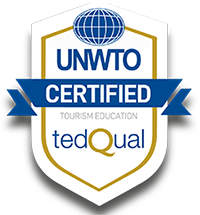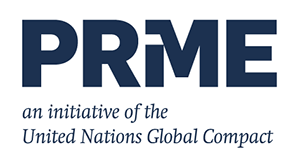This fall semester, professor of hospitality and tourism at the College of Asia Pacific Studies Takayuki Kubo worked with the Oita Godo Shimbun to hold the collaborative lecture series “Oita Heritage and Community Development,” which addressed the theme of “knowing, leveraging, and disseminating information about Oita.” Now in its second year, this lecture series was attended by 36 students who learned about Oita through a combination of classroom lessons and field study.
For its textbook, the classroom lessons used “Oita Heritage,” a serial publication celebrating the 120th anniversary of the Oita Godo Shimbun. The lectures invited people active on the frontlines of natural and cultural research in the prefecture as speakers. The field study portion of the lecture series (held during the seven weeks of classwork) consisted of visits to 13 notable sites in areas such as Kunisaki, Bungo Ono, and Hita. By visiting these locations in person, students were able to further deepen their understanding of the materials covered in class. The collaborative lecture series culminated with presentations given by seven teams of students on ideas related to community development that utilize items of Oita’s heritage as potential sources of tourism. The presentations were held at the Beppu Kokaido venue in Kamitanoyumachi in Beppu City on November 14.
Kubo had this to say about the event:
“APU brings together students from a large number of countries around the world and all over Japan, all of whom will eventually graduate and depart from the university. If these students are given opportunities to learn about the amazing history and culture of various locations in Oita during their four-year stay at the university, we can expect them to broadcast the appeal of Oita to the rest of Japan and the world in the future.
With the cooperation of the local community, I was able to provide experience-oriented lessons that allowed students to gain sufficient knowledge about the historical and cultural heritage of the Oita region through classwork and visits to sites in the region. To express their gratitude, students analyzed problems they felt were facing the region and corresponding responses. They provided policy proposals for sustainable development of the region to the community.
In the lecture series’ second year, I believe students were able to offer more concrete proposals. One such proposal was outlined in a presentation on the theme of “Attracting Inbound Visitors with the Harajiri Falls in Bungo Ono City, Oita Prefecture.” The presentation described projects or events such as operating a glamping (luxury camping) site near the waterfalls or utilizing projection mapping onto the waterfalls. This proposal was positively received by the Bungo Ono City officials in charge of community development, and they plan to provide further opportunities to involve APU students in community development in the future.
I believe that increasing experience or practice-oriented education through industry-government-academia collaboration events such as this lecture series will contribute to the sustainable development of the Oita region. My hope is that this lecture series can develop into a model for this type of education.”











